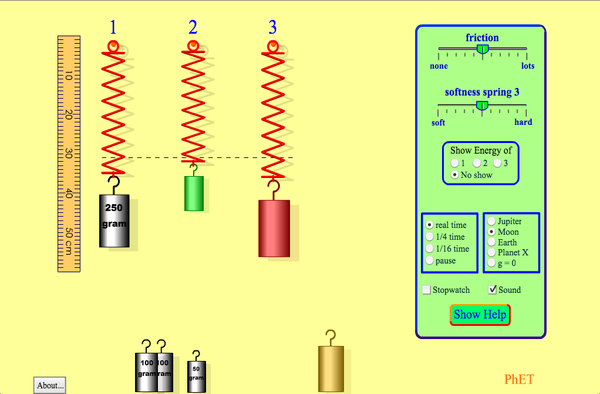The PHYS 110 class started by looking at the class data from the previous mini-lab. It was not as clean as I'd hoped, but we talked a bit about variance and uncertainty in data and how to improve that.
Then we followed that discussion up with one of my favorite demos - taking a set of 5 balls of various sizes and masses and challenging the groups to order them by weight. The key to this demo is that there should be a small steel ball which weighs LESS than a larger foam ball. Most groups will say the metal ball is the heaviest. Today there were two groups that said the foam ball was not the lightest, but the other four groups said it was. Students are amazed to learn the foam ball is the heaviest and the steel ball is less massive than two of the balls (at least) in the set. It is a dramatic illustration of the body's sensitivity to pressure.
After finishing up the intro to basic physics, we started on Simple Harmonic Motion and got through part of the PHeT demo on Masses and Springs as a mini-lab


No comments:
Post a Comment